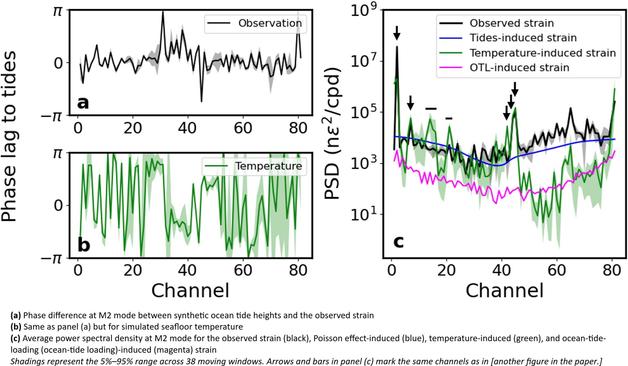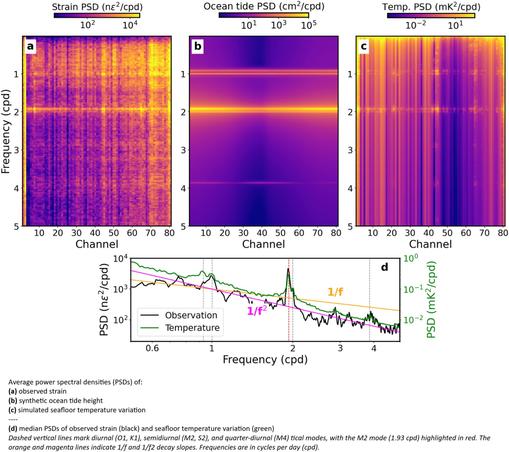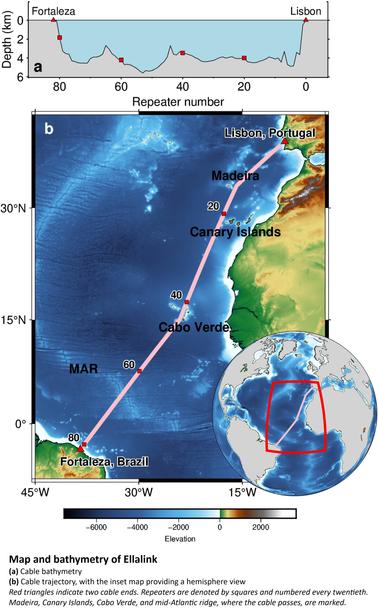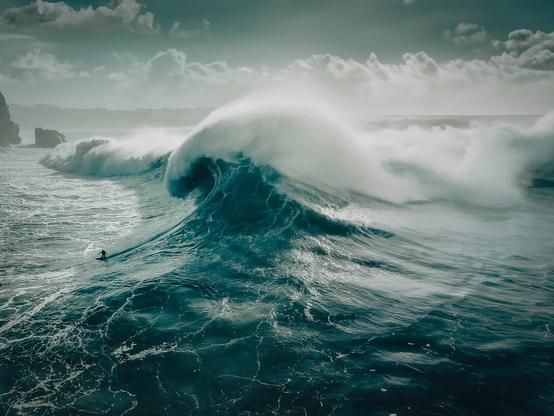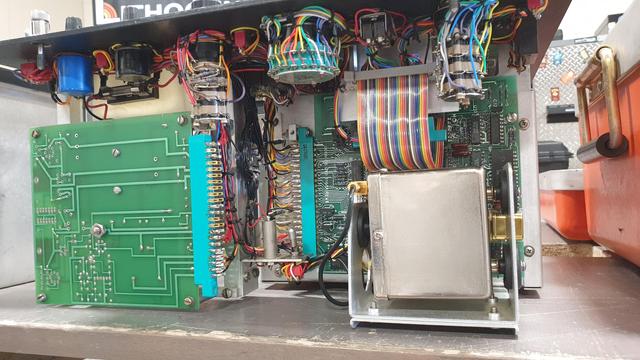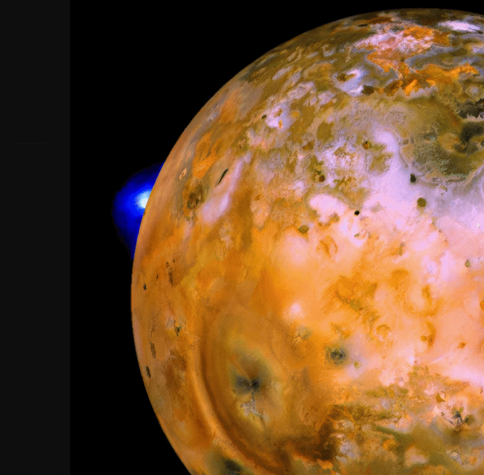Good news, everyone
#GEOPHYSICS
Over 1,000 earthquakes have struck Japan’s remote Tokara island chain since June 21. The latest—a magnitude 5.5 quake—forced the evacuation of all 89 residents of Akuseki Island.
#SPACEWEATHER
#GEOPHYSICS
Japan Orders Evacuation of Aku...
Brandes et al present a review of the history of investigations of the forebulge from the North American and Eurasian ice sheets. The collapse of the forebulge is responsible for rising relative sea level along the east coast of the United States.
#SeaLevel #GlacialIsostaticAdjustment #Geophysics #IceSheets
What the heck is happening with the weather?
542 waiting for this livestream...including me.
#SPACEWEATHER
#GEOPHYSICS
🙏☀️🙏
The TRUTH of WEATHER MANIPULAT...
SHINMOEDAKE VOLCANO ERUPTS – SOUTHERN JAPAN ON EDGE 🌋
A powerful eruption at Shinmoedake volcano has launched a massive ash plume 3,000 meters into the sky, covering towns across Kagoshima and Miyazaki in thick volcanic ash.
#GEOPHYSICS
The Eruption of Shinmoedake #v...
We are in it now, Lovers.
🙏☀️🙏
#SPACEWEATHER
#GEOPHYSICS
The Solar System is in an Ener...
Martian Streaks Are Dry
Dark lines appearing on Martian slopes have triggered theories of flowing water or brine on the planet’s surface. But a new study suggests that these features are, instead, dry. To explore these streaks, the team assembled a global database of sightings and correlated their map with other known quantities, like temperature, wind speed, and rock slides. By connecting the data across thousands of streaks, they could build statistics about what variables correlated with the streaks’ appearance.
What they found was that streaks didn’t appear in places connected to liquid water or even frost. Instead, the streaks appeared in spots with high wind speeds and heavy dust accumulation. The team included that, rather than being moist areas, the streaks are dry and form when dust slides down the slope, perhaps triggered by high winds or passing dust devils.
Although showing that the streaks aren’t associated with water may seem disappointing, it may mean that NASA will be able to explore them sooner. Right now, NASA avoids sending rovers anywhere near water, out of concern that Earth microbes still on the rover could contaminate the Martian environment. (Image credit: NASA; research credit: V. Bickel and A. Valantinas; via Gizmodo)
#fluidDynamics #geophysics #Mars #physics #planetaryScience #science
A new 4.6 magnitude earthquake has struck the Campi Flegrei region, near Naples, causing panic and landslides, and signals that the supervolcano is becoming more active.
Will there be a seismic shift in the global narrative as the Earth's crust continues to shake?
#SPACEWEATHER
#GEOPHYSICS
🙏☀️🙏
PANIC IN NAPLES! EARTHQUAKE CA...
An earthquake swarm occurring just south of Japan along the Ryukyu Trench rapidly intensified today with a new flurry of earthquakes as well as the strongest earthquake in the sequence yet, a magnitude 5.6.
#GEOPHYSICS
#WEARETHEMEDIA
Is a Mega-Quake about to Strik...
July is here.
Buckle up, Buttercups!
#SPACEWEATHER
#GEOPHYSICS
🙏☀️🙏
Earth's Deadly Radiation Belts...
Heads up, geophysicists! Look at our world.
#SPACEWEATHER
#GEOPHYSICS
STRONGEST Earthquake (M4.6) in...
Stay solar weather aware.
#SPACEWEATHER
#SCHUMANN
#GEOPHYSICS
🙏☀️🙏
Giant CME!!
Explosive heat waves, volcanic activity, and plasma structures coming off the Sun... What is happening, and how much of it can be attributed to #SPACEWEATHER?
#GEOPHYSICS
SUDDEN FIRESTORM hits Earth 🔥 ...
Une étude récente, publiée dans Geophysical Research Letters, révèle des signaux sismiques atypiques sous les volcans du Massif central, suggérant que les réservoirs magmatiques pourraient encore être en activité. #Geophysics https://www.insu.cnrs.fr/fr/cnrsinfo/decouverte-de-seismes-longue-periode-profonds-sous-les-volcans-du-massif-central
Complete Space Weather and Earth Geophysics Report June 27th 2025 by geophysicist Stefan Burns.
#SPACEWEATHER
#GEOPHYSICS
#SCHUMANN
🙏〰️🙏
Is the Sun Funneling COSMIC EN...
It's not woo-woo when it's science. #SPACEWEATHER #GEOPHYSICS now with bonus #ASTRONOMY
A massive pulse of energy was just received across Eurasia - picked up by three Schumann resonances stations - days after energy from a stellar nova explosion ~5000 ly away (V462 Lupi) occurred, and just after a large daylight meteorite streaked across the Southeast USA.
#SPACEWEATHER
#GEOPHYSICS
MASSIVE GLOBAL ENERGY PULSE HA...
Trans-Oceanic Distributed Sensing Of Tides Over Telecommunication Cable Between Portugal & Brazil
--
https://lnkd.in/gBPpBchx <-- shared paper
--
[not something I know much about technically - so what better reason to read a paper!? What a fascinating & clever repurposing idea]
#GIS #spatial #mapping #geophysics #geophysical #remotesensing #model #modeling #spatialanalysis #spatiotemporal #cable #transoceanic #cable #tide #waves #tsunami #earlywarning #repurposing #usecase #appliedscience #appliedtechnology #fibreoptic #microwave #modulation #submarine #telecom #telecommunications #sensor #realtime #monitoring #measurememnt #marine #ocean #temperature #tidal #climate #climatechange #naturalhazards #risk #hazard #currents #circulation #infrastructure
Sexy EM37 internals -- a mostly analogue scientific instrument discontinued in the 90s.
Io’s Missing Magma Ocean
In the late 1970s, scientists conjectured that Io was likely a volcanic world, heated by tidal forces from Jupiter that squeeze it along its elliptical orbit. Only months later, images from Voyager 1’s flyby confirmed the moon’s volcanism. Magnetometer data from Galileo’s later flyby suggested that tidal heating had created a shallow magma ocean that powered the moon’s volcanic activity. But newly analyzed data from Juno’s flyby shows that Io doesn’t have a magma ocean after all.
The new flyby used radio transmission data to measure any little wobbles that Io caused by tugging Juno off its expected course. The team expected a magma ocean to cause plenty of distortions for the spacecraft, but the effect was much slighter than expected. Their conclusion? Io has no magma ocean lurking under its crust. The results don’t preclude a deeper magma ocean, but at what point do you distinguish a magma ocean from a body’s liquid core?
Instead, scientists are now exploring the possibility that Io’s magma shoots up from much smaller pockets of magma rather than one enormous, shared source. (Image credit: NASA/JPL/USGS; research credit: R. Park et al.; see also Quanta)
#fluidDynamics #geophysics #Io #magma #physics #planetaryScience #science #subsurfaceOceans #tidalHeating #volcano

